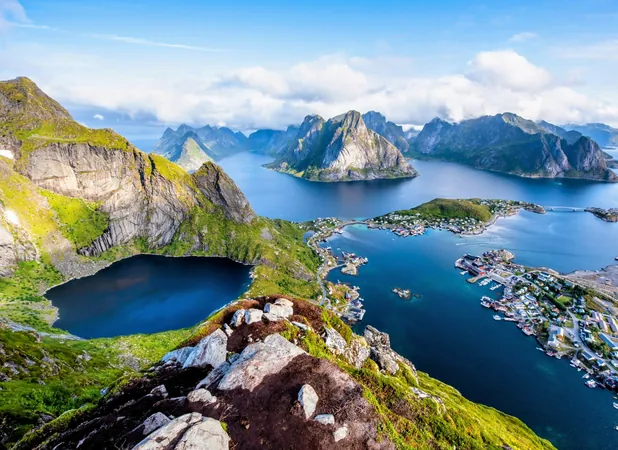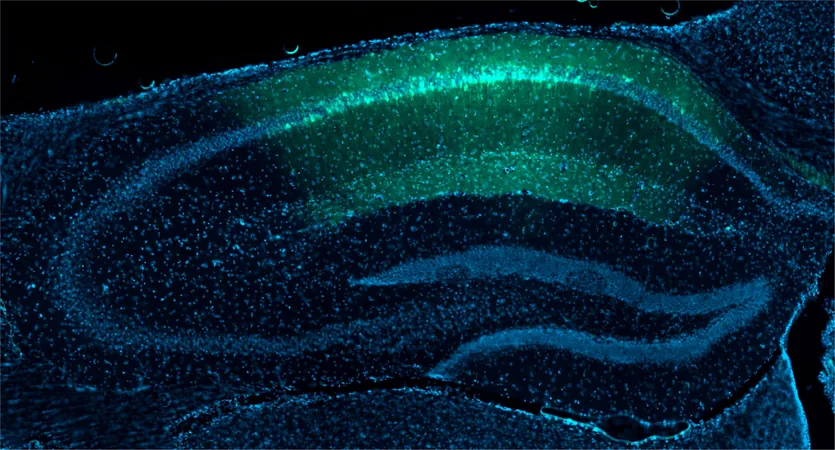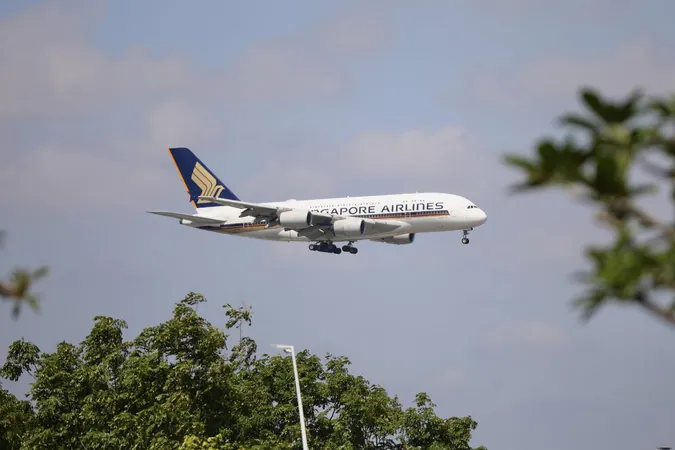
Arctic Fjords: A Cry for Help in a Warming World
2025-04-27
Author: Mei
The Arctic’s breathtaking icy landscapes are not just visual spectacles; they are crucial players in our planet's climate regulation.
Recent studies reveal that climate change is threatening one of the Arctic's key defenses: the fjords’ ability to capture and store carbon.
Researchers at the iC3 Polar Research Hub have been closely monitoring these changes, with Kongsfjorden in Svalbard being a focal point of their investigation.
Their findings show that melting ice is reshaping the local environment and disrupting the delicate balance of life that helps sequester carbon dioxide.
Meet the Microscopic Heroes: Phytoplankton
These tiny aquatic plants are foundational to the Arctic food web. They are not only sustenance for various marine creatures but are also vital for carbon cycling and climate regulation.
As the ice retreats, more sunlight penetrates the ocean surface, stimulating phytoplankton growth. This uptick in productivity attracts fish and marine animals to these bustling areas.
Jochen Knies, lead author of the study, cautioned, “The future of these fjord ecosystems hinges on their ability to adapt to a warming climate.”
The Paradox of Warmer Waters
While warmer ocean temperatures can boost phytoplankton during vibrant Arctic summers, this growth also comes with complications.
Warmer surface waters become stable and layered, preventing vital nutrients from reaching the upper layers where phytoplankton thrive.
Initially, increased phytoplankton blooms may seem beneficial, but over time, their capacity to sequester carbon could diminish.
Jochen elaborated, “Though we expect greater primary production, the reality is that warmer, stratified waters may reduce the fjords’ effectiveness as robust carbon sinks.”
Fading Nutrient Lifelines
Glacial meltwater supplies essential nutrients to Arctic fjords, supporting the entire marine ecosystem.
However, as glaciers recede, this nutrient flow becomes inconsistent. A lack of a steady water supply could jeopardize the flourishing marine life.
The implications extend beyond fish and marine mammals; they threaten the Arctic’s vital role in carbon capture, disrupting the equilibrium of life and climate regulation.
A Global Warning From the Arctic
The Arctic serves as an early warning system for global climate trends. The melting ice caps symbolize more than loss; they echo urgent warnings.
Jochen warns, “The fate of Arctic fjords mirrors the broader climate challenges we face worldwide.” The changes here are not isolated—they signal potential upheaval for the entire planet.
Climate Change Knows No Boundaries
The impact of climate change extends far beyond the Arctic, infiltrating every aspect of life on Earth—from altering weather patterns to reshaping ecosystems and livelihoods.
Escalating temperatures are driving more severe storms, prolonged droughts, and variable crop growing seasons. Ocean currents are shifting, and wildlife is migrating to new territories.
The events unfolding in Arctic fjords are merely part of a larger global puzzle; melting glaciers threaten rising sea levels that could endanger coastal cities far away.
Even minor shifts in phytoplankton blooms represent broader disruptions in nature, with consequences that echo through food webs and economies worldwide.
Scientists emphasize that these transformations are occurring more rapidly than models once projected. Every fraction of a degree in warming holds significance.
Every decision we make—whether it’s reducing emissions or protecting natural environments—could steer us toward a more stable future. The story of the Arctic fjords sheds light on the formidable global challenges that lie ahead.



 Brasil (PT)
Brasil (PT)
 Canada (EN)
Canada (EN)
 Chile (ES)
Chile (ES)
 Česko (CS)
Česko (CS)
 대한민국 (KO)
대한민국 (KO)
 España (ES)
España (ES)
 France (FR)
France (FR)
 Hong Kong (EN)
Hong Kong (EN)
 Italia (IT)
Italia (IT)
 日本 (JA)
日本 (JA)
 Magyarország (HU)
Magyarország (HU)
 Norge (NO)
Norge (NO)
 Polska (PL)
Polska (PL)
 Schweiz (DE)
Schweiz (DE)
 Singapore (EN)
Singapore (EN)
 Sverige (SV)
Sverige (SV)
 Suomi (FI)
Suomi (FI)
 Türkiye (TR)
Türkiye (TR)
 الإمارات العربية المتحدة (AR)
الإمارات العربية المتحدة (AR)